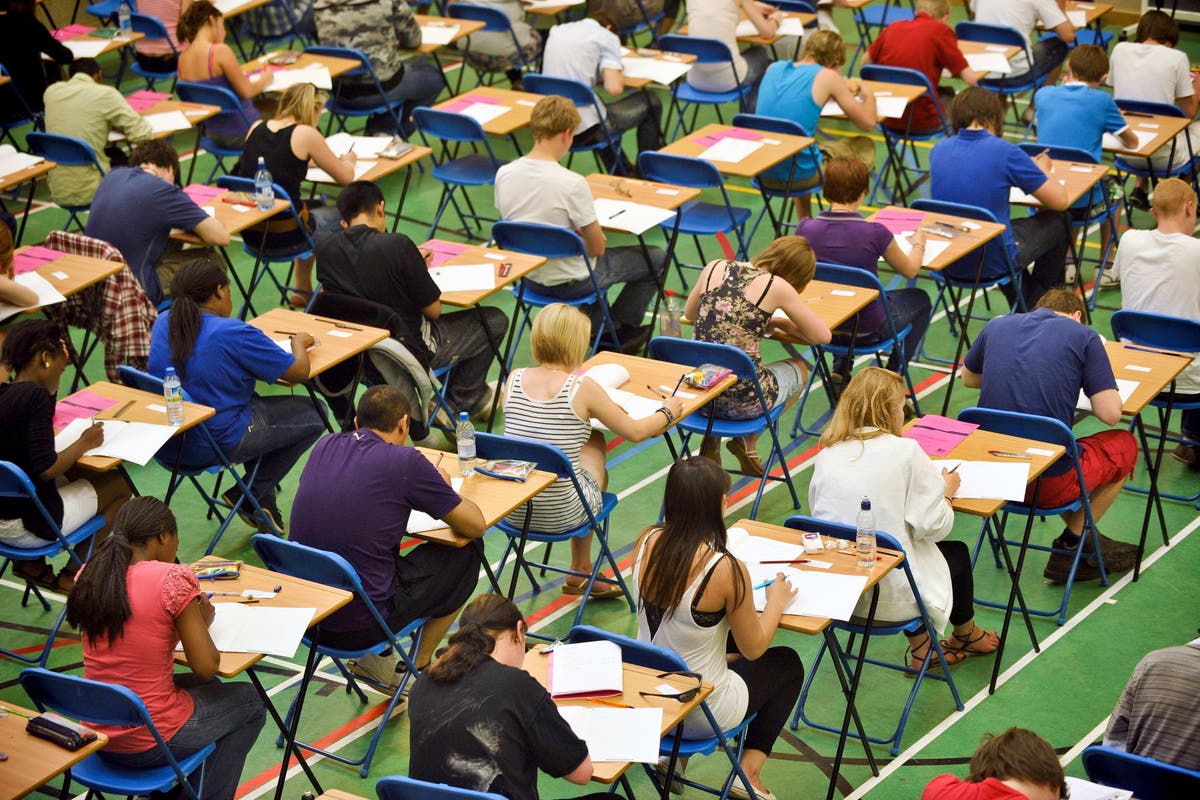Pupils in England may very well be assessed digitally in a few of their GCSE and A-level exams below proposals.
AQAthe largest examination board for GCSEs and A-levels in England, is aiming to roll out on-screen exams over a interval of years and it hopes that college students will sit no less than one main topic digitally by 2030.
The studying and listening elements of GCSE Italian and Polish – topic to regulatory approval – could be the primary to maneuver to digital exams in 2026, in line with the proposals by the examination board.
Our ambition is that college students will sit a large-entry topic – meaning, in our case, a whole lot of hundreds of simultaneous exams – digitally by 2030
Colin Hughes, AQA
A report by AQA stated that the primary exams will largely replicate the prevailing paper exams on display, however it stated there may be a lot potential for “extra modern and interactive evaluation” in the long term.
Digital exams assist put together younger folks for the digital world, are extra inclusive, extra “environmentally sustainable”, develop digital expertise and are what younger folks need, in line with the report.
It added: “We is not going to put off conventional pen and paper exams in a rush, and anticipate an examination system the place some elements of some GCSE or A-level programs are delivered in a paper-based method and different elements are digitally delivered.”
College students’ gadgets shall be offline within the examination corridor they usually will be unable to seek for data on the web, nor will they have the ability to entry synthetic intelligence (AI) instruments, the examination board stated.
The proposals come after AQA has spent years piloting digital exams.
Colin Hughes, chief government of AQA, stated: “Know-how and alter are two constants in schooling. In any case, we went from quills to fountain pens to biros, and from scrolls to books. Transferring to digital exams is the following step of this evolution.
“We can not and shouldn’t change the best way we conduct exams in a single day. AQA has spent a number of years trialling and piloting digital exams and we are going to roll them out over a few years.
“Our ambition is that college students will sit a large-entry topic – meaning, in our case, a whole lot of hundreds of simultaneous exams – digitally by 2030.
“Within the meantime, we’ll proceed to speak to academics, college leaders and exams officers about how they wish to make these modifications. The advantages are substantial.”
Our present system is changing into more and more outdated, and at GCSE leads to college students taking an unlimited variety of terminal pen-and-paper exams
Tom Middlehurst, ASCL
Earlier this 12 months, the OCR examination board additionally piloted digital exams in UK faculties.
In a coverage doc revealed this month, which set out plans to introduce a single qualification which is able to finally exchange A-levels and T-levels, the Division for Schooling (DfE) stated it might work with the sector and consultants to “look once more” on the sort and format of GCSE exams wanted at age 16.
It stated it might take into account whether or not it may “undertake digital options, akin to on-screen evaluation” to permit efficiency to be assessed in “extra modern and fewer onerous methods”.
Tom Middlehurst, curriculum, evaluation and inspection specialist on the Affiliation of Faculty and Faculty Leaders (ASCL), stated: “It is vitally encouraging that examination boards are persevering with to discover methods of transferring in direction of digital exams.
“Our present system is changing into more and more outdated, and at GCSE leads to college students taking an unlimited variety of terminal pen-and-paper exams.”
He added: “Whereas a digital method has many advantages, it’s crucial that it comes with correct funding in instructional expertise that ensures all college students are given equal entry to the gadgets they’ll use in exams.
“In any other case, this method dangers favouring college students who’ve better entry to expertise at dwelling and will inadvertently enhance the drawback hole.”









